Kategorie-Archiv: Computer und IT
tum | bling
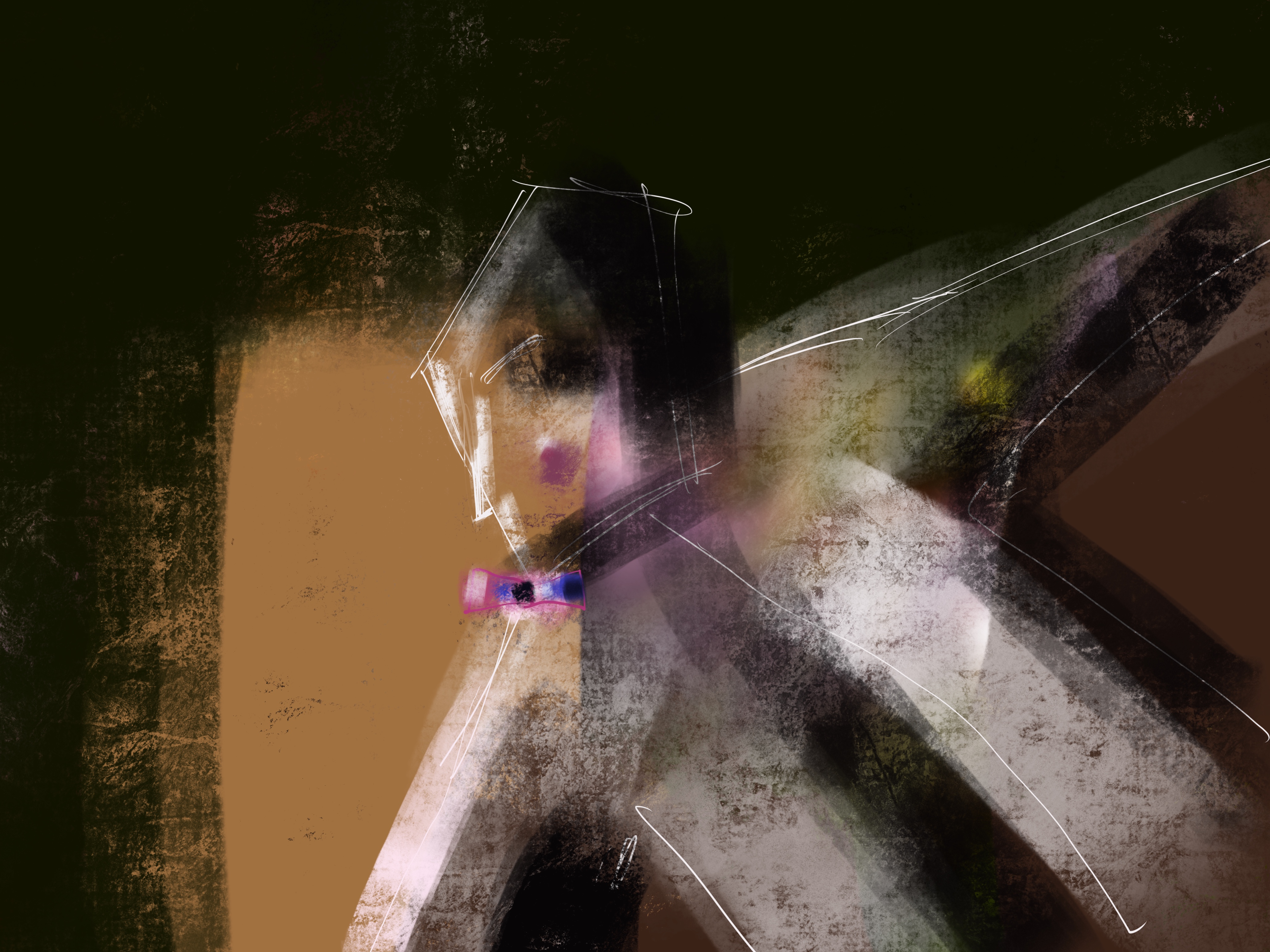
painting: ms
es ist | serviert
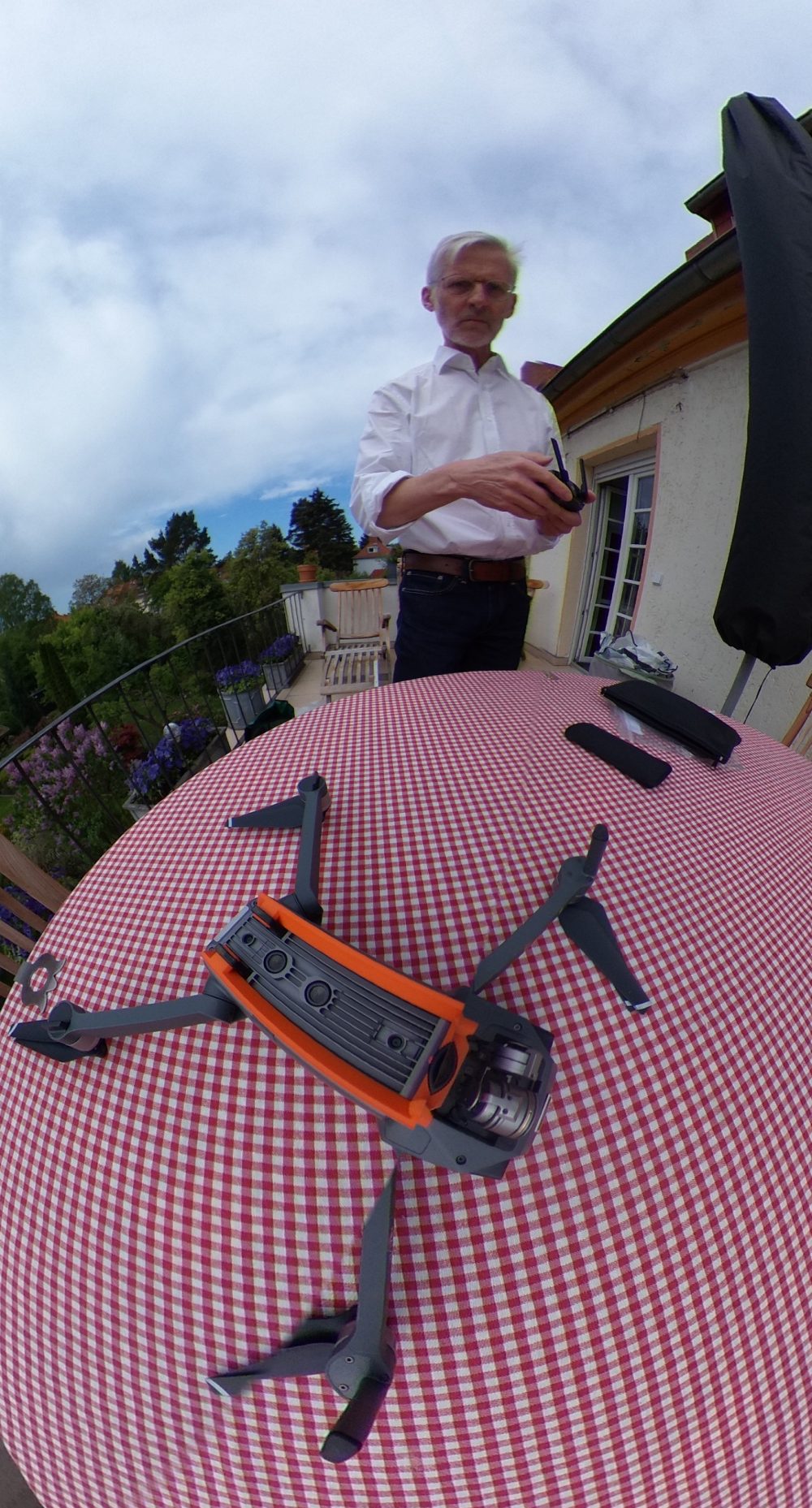
drohne mit 360° kamera löst aus.
konkret | abstrakt
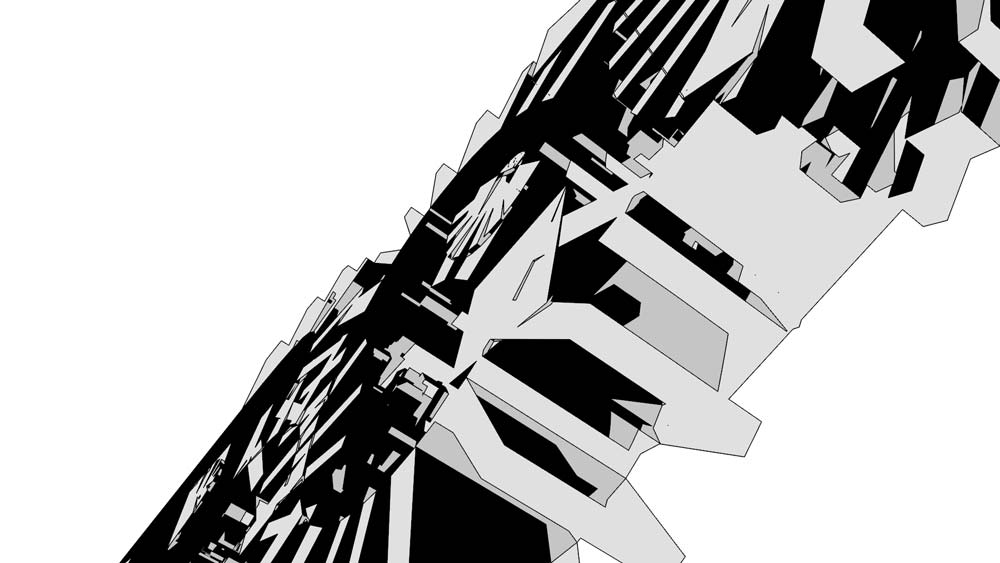
typografie, in 5 minuten erstellt, prosets, aiToon, in 40 sekunden hochauflösend gerendert.
diese figur ist nicht | echt
… es sei denn 500 bytes wären echt. anfassbar sind sie nicht.
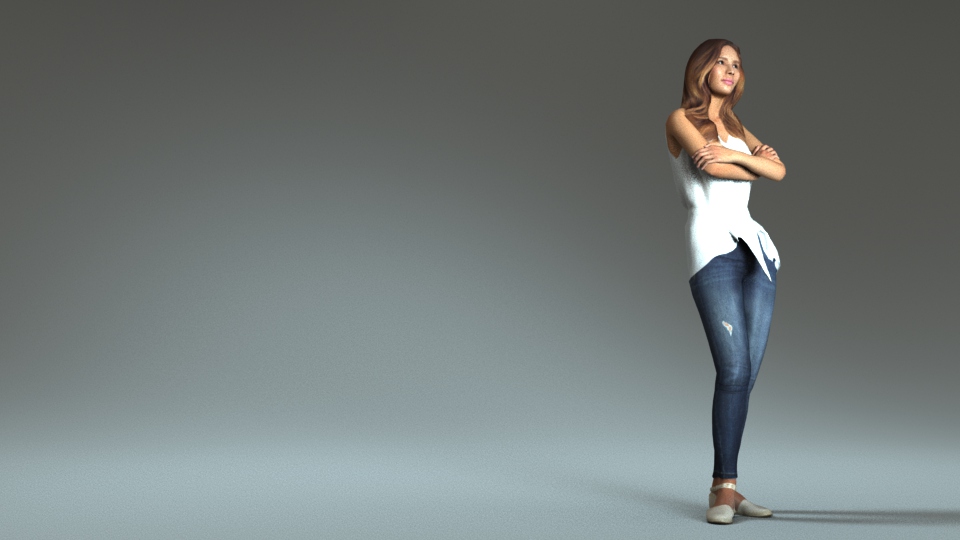
sophia from renderpeople.com, von mir ins rechte licht gesetzt. das → tutorial dazu
roland R-07 | audio recorder
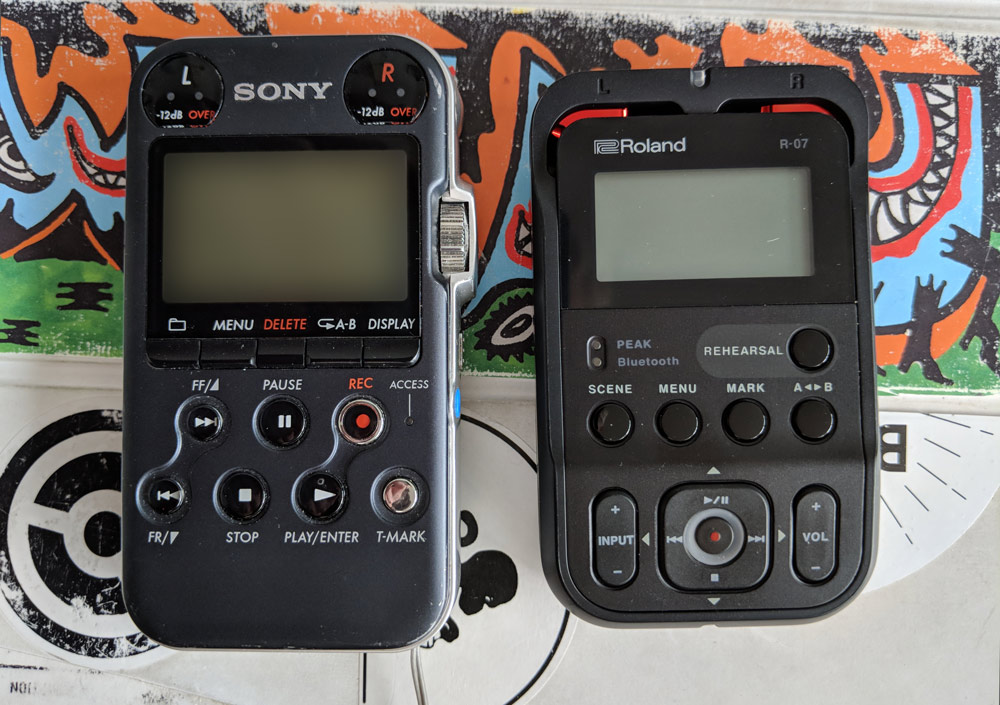
sony PCM-M10 and roland R-07
around 2010 i heard of a small new professional audio recorder by sony – the first decent alternative to my much larger mp3/wav-recorder then. i bought the sony PCM-M10 new for around 220 € and recorded hundreds of sounds and music and interviews for radio with it. the device is as small as a cigarette pack and resides always in my backpack. i rarely use the excellent internal mikes, because for the interviews i need a mike which i can hold close to my guests and which is more or less plop- and wind resistant. the PCM became so popular that, when sony replaced it by a much bigger and more expensive recorder, it was hard to get it second hand, and if you found it on ebay, it cost double the original price. i was looking for a replacement because one of the push buttons does not work any more. not a major problem because it’s the folder button, not the menu button. i can manage the file/folder system via USB on my PC. a key reason why i did not find a proper alternative was that all follow-up recorders from all brands were bigger and had a horrible design, with microphones sticking out etc. in the screenshot below a sales website informs us that the sony recorder is not available any more. the “alternatives” are all clumsy or ugly.
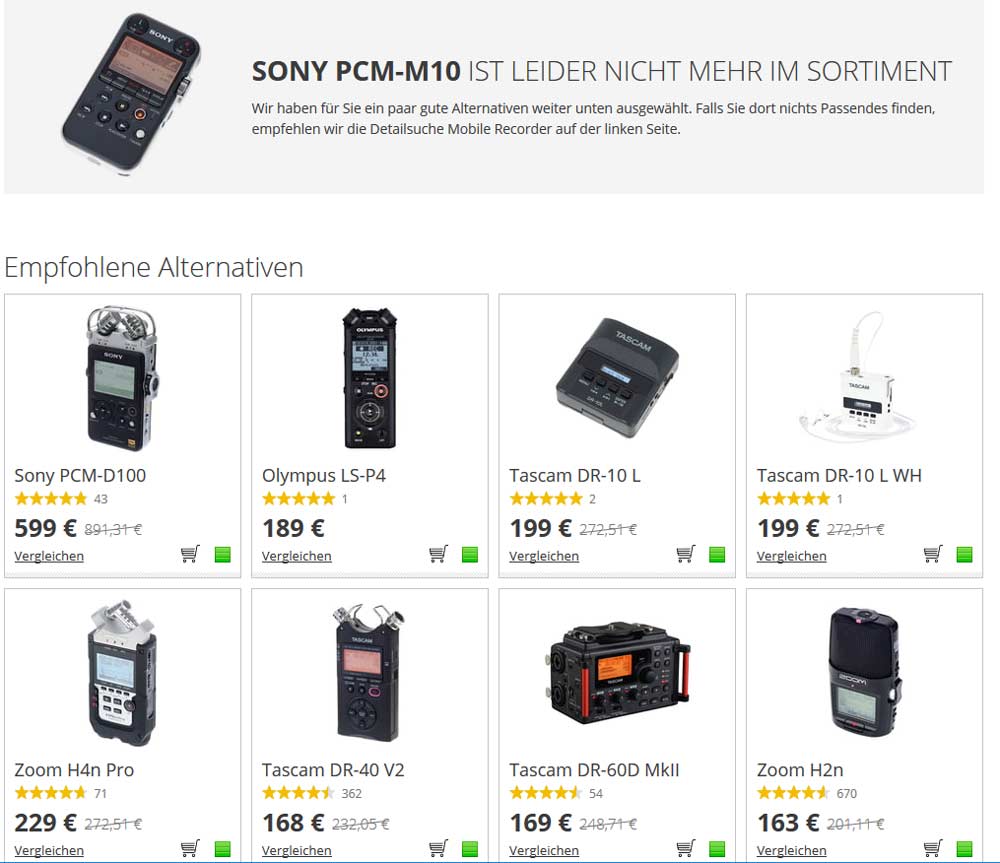
thomann.de offers no real alternatives to the outdated sony recorder
this year, early 2018, roland released the first real alternative to the small sony recorder, the R-07. i thought the price was right, and it was about time to replace my 8 year old sony. so i ordered it from thomann, germany’s largest and very friendly online sales company for musicians. the R-07 turned out to be a really nice machine with two major advantages over the sony: bluetooth and size.
i returned the roland to thomann.de today after three days of testing. three reasons:
a) during the 8 years between the two devices nothing seems to have changed significantly. the screen is as dim as before, the UI in the menus is as lousy as before, the buttons look cheap and fragile compared to the ones in the old recorder.
b) bluetooth does not really help at all. the main reason we use monitoring here is while we record music, sound or an interview. the latency is typical for bluetooth and not acceptable for monitoring. the audio in the earphones lags behind, you cannot concentrate on what you record – unless the recorder is in a separate room/studio. but this is not my routine as a journalist and musician.
c) when connecting the R-07 to my PC via USB it took some time until the recorder showed up in the explorer/finder. plus: more than once when i disconnected it from USB the display froze. i had to remove the battery for a total reset. a firmware update hopefully fixes this quite drastic bug.
the R-07 has a nice feature which is maybe practical for people who record a lot of ambient sounds or live music: the recorder saves two files of the same recording, one with a much lower input gain. when clipping appears (due to very loud signal peaks), the R-07 blends the two recordings together, so that the clipping disappears.
and, just like the old sony, it has a good preamp for external mikes.
bottom line: from a new generation of audio recorders i expect significant advances, especially in terms of UI and display. why not a touchscreen? after all we use these kind of recorders because our UI-friendly smartphones are not robust enough for the daily field recording routine, they don’t handle external mikes well, and we want to rather press a button to start professional recording than to unlock the smartphone, locate and launch a recording app and always be unsure if it’s active and has the proper settings etc.
kalscheurer see | 360°
das foto ist auch in den → wiki commons.
flucht | bewegung
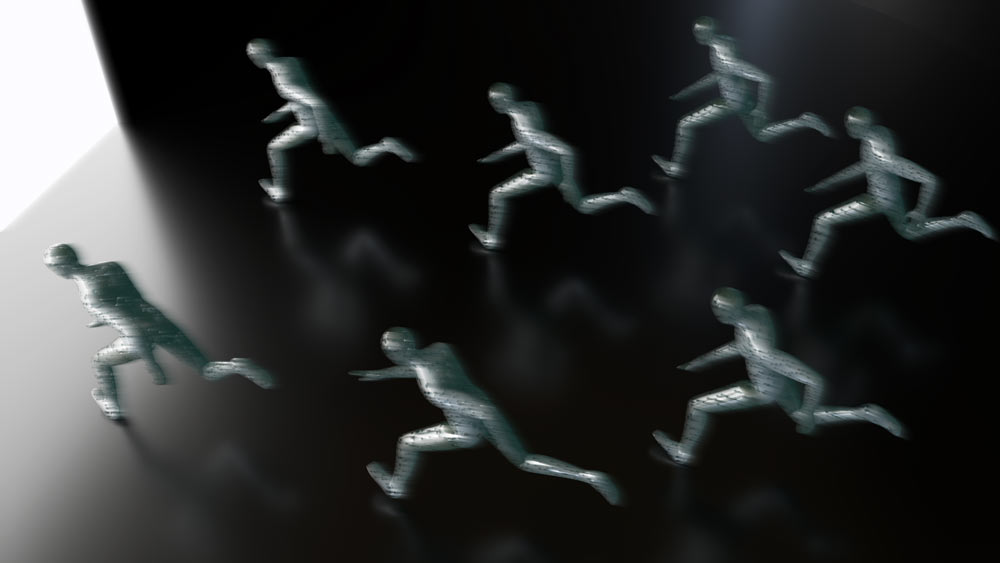
flucht, wohin? grafik: ms/dpa
die bewegungsunschärfe hätte ich direkt rendern können – und würde es bei einer bildfolge, also einem film, so tun. bei diesem bild habe ich mich aber entschieden, es komplett scharf zu rendern und mit dem photoshop-filter „pfad unschärfe“ nachbearbeitet. der filter simuliert eine kamerabewegung und tut hier so, als würde ich mit der kamera den läufern hinterherschwenken.
rot ins | ziel
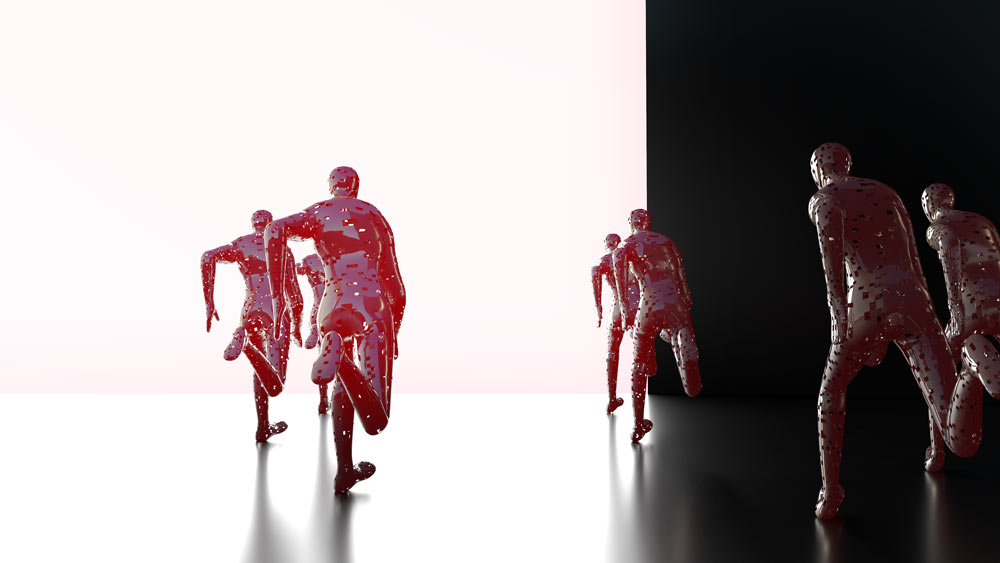
… aber dann? grafik: ms/dpa
a pen writes | foam
… in 3D, of course. the workflow is interesting. like most tasks this one can be solved in several ways. the client needs a hand written animation with the product or brand name. you can do it either with particles or liquid simulations or, much more pragmantic, using a NURBS curve, a pen attached to the curve with a motion path, and a paintFX ink or oil stroke synced to the pen movement. here’s a standard rendering, and below one with arnold toon shader.
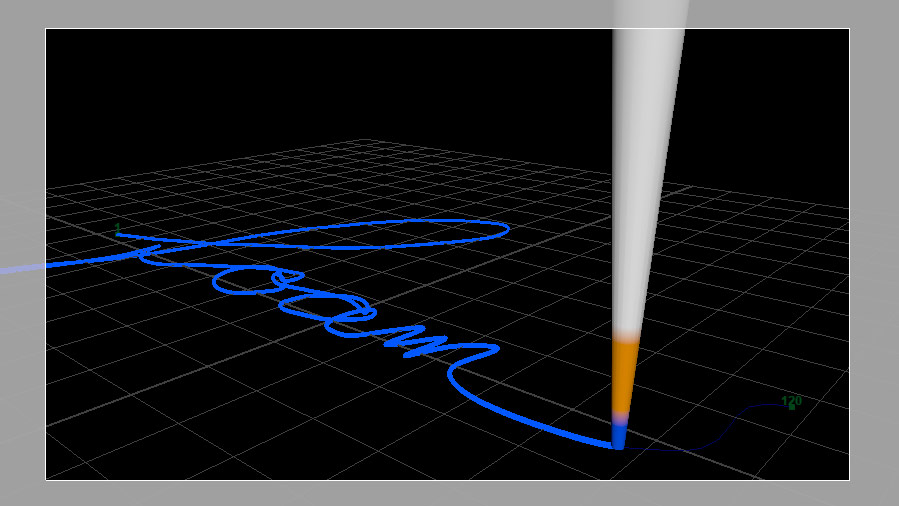
a pen writes foam
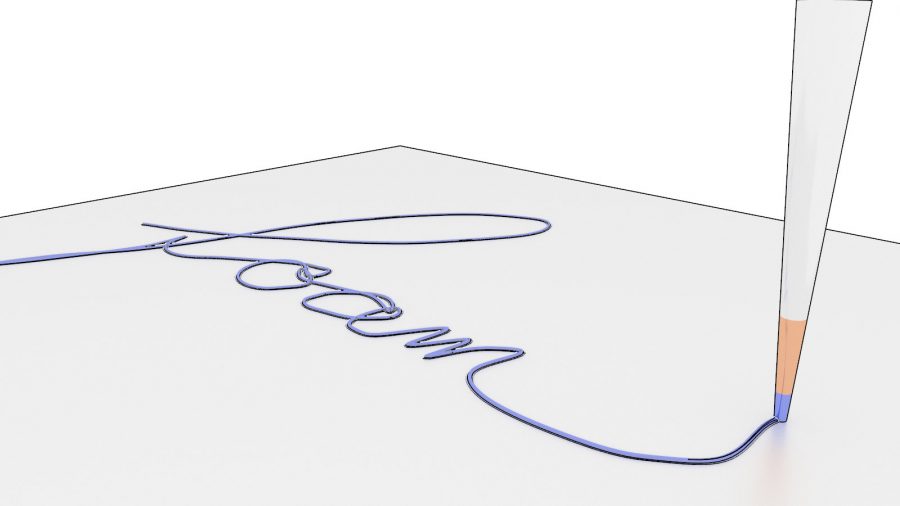
stylized rendering
peter | grünberg
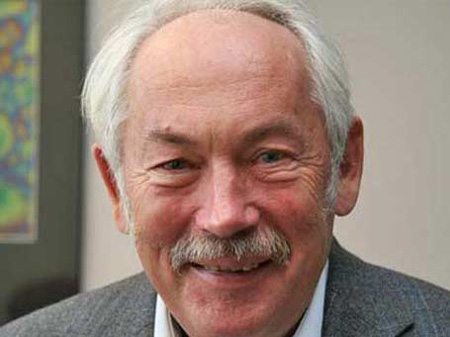
peter grünberg 2010. foto: ms/dpa
ich hab ihn, glaube ich, zweimal getroffen, zuletzt im dezember 2010. peter grünberg war einer unserer vier masterminds im deutschlandfunk. nobelpreisträger für physik. ihm ist zu verdanken, dass unsere festplatten nicht mehr bei gigabytes herumdpmpeln, sondern paar hundert mal mehr speichern.
auf der ➡ webseite ist der bescheidene mann ganz unten zu hören. ich habe damals das foto von ihm gemacht. er war schon ziemlich krank, aber guter dinge. jetzt ist peter grünberg gestorben.
arnold toon | shader
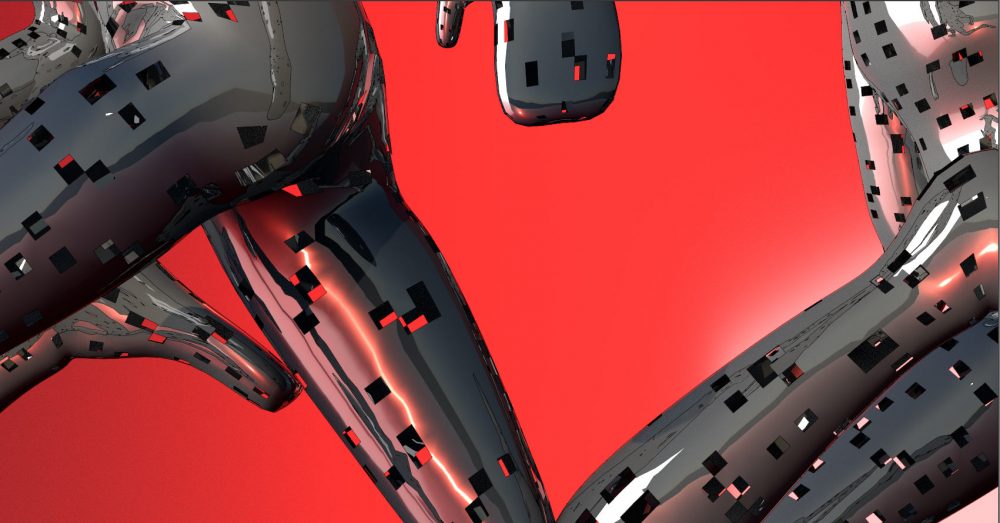
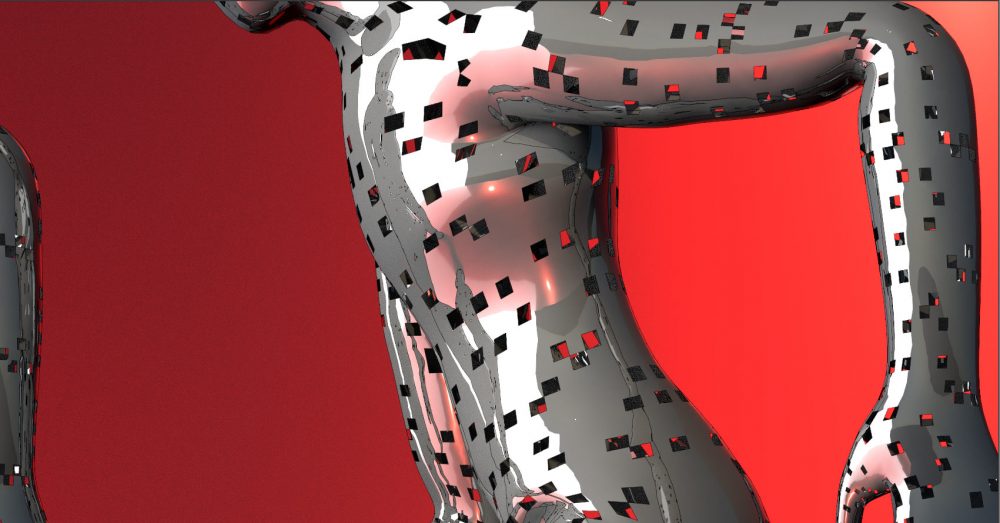
new in solid angle → arnold in version 5.1 is, among other things, the toon shader. arnold, famous for its photorealism, offers, as a side effect, some cartoon rendering options. the amount of detail is amazing, as shown in the image above. note the ultra thin silhouette of the border parts of the gemoetry.
below you see a detail from the torso front of the runner where another runner in the scene appears as a cartoonish reflection. i modeled the holes in the character with mainframe north’s plug-in for maya → prosets.
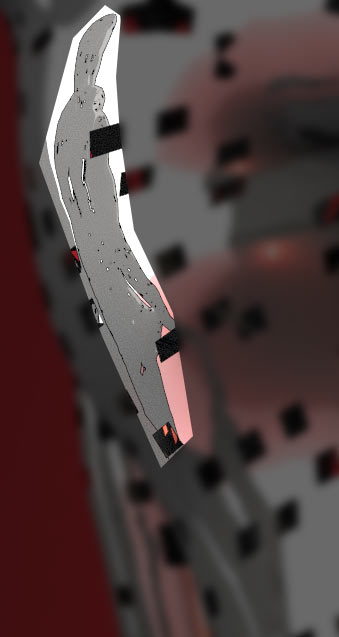
drohne mit 360° kamera | drunter
i‘ve seen the other side of | government
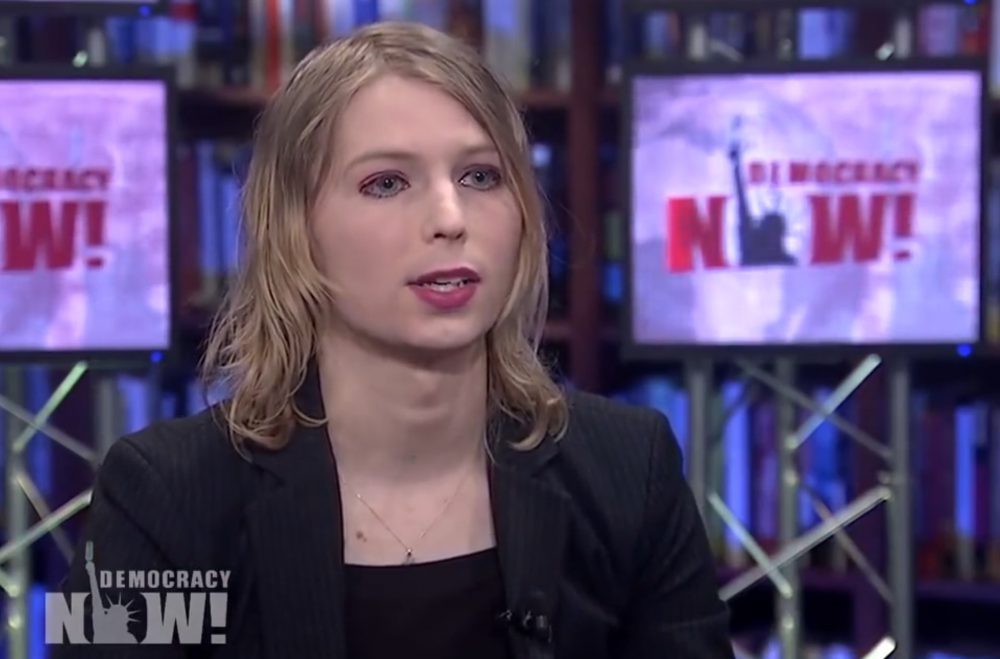
chelsea manning bei democracy now
NURBS | spoon
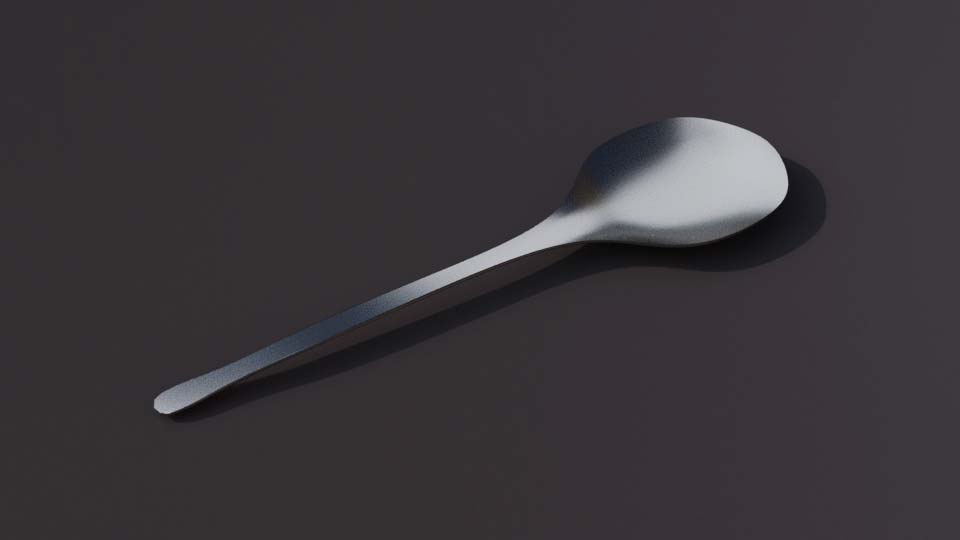
… modeled with only 8 curves, lit with three lights
a day in a | life
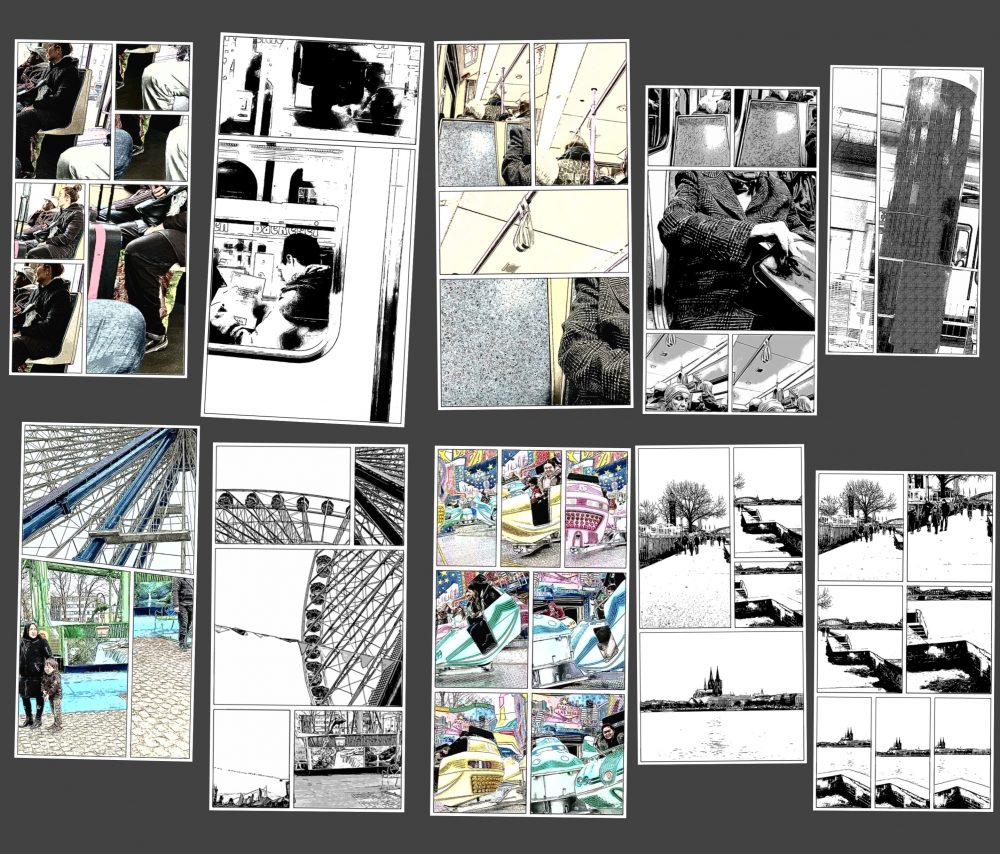
mit google labs‘ „storyboard“
kir | mes
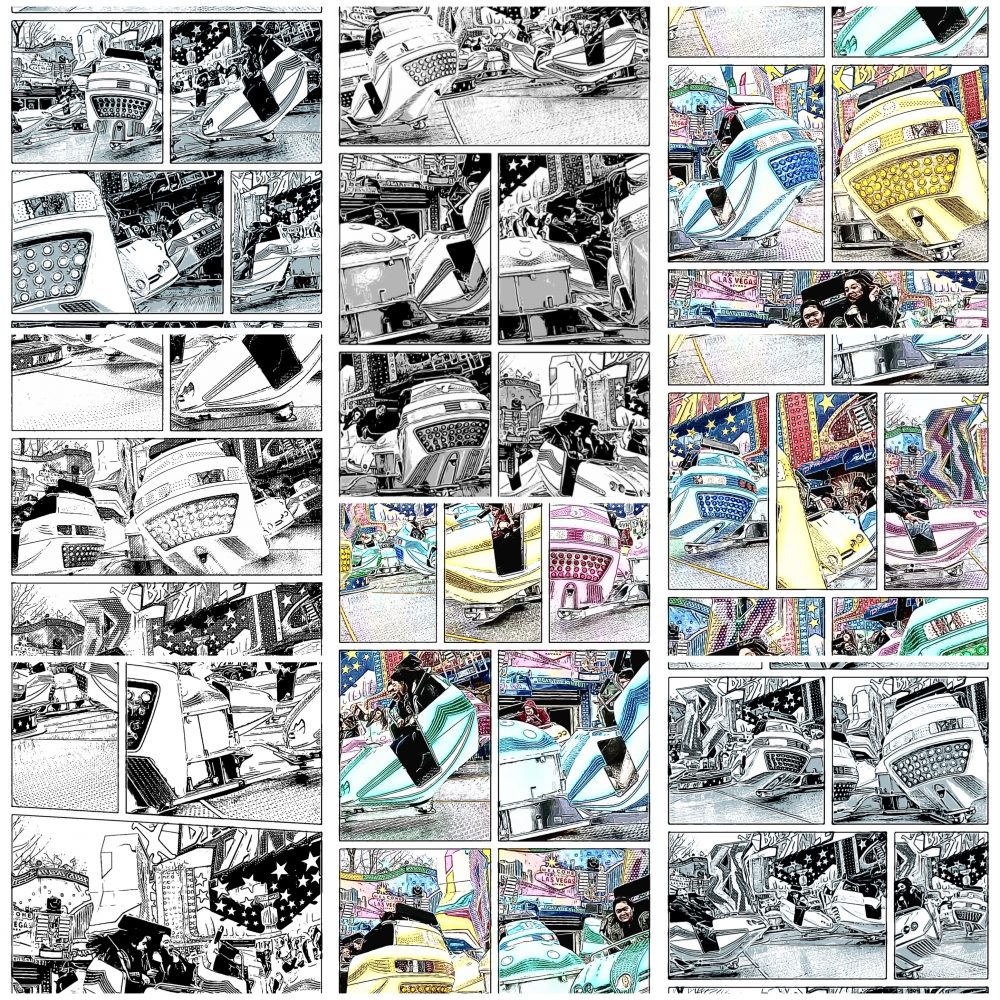
aus einem 5 sek. video, mit der google labs app „storyboard“
oben die collage, unten eins der unendlich vielen möglichen einzelbilder (permutationen):
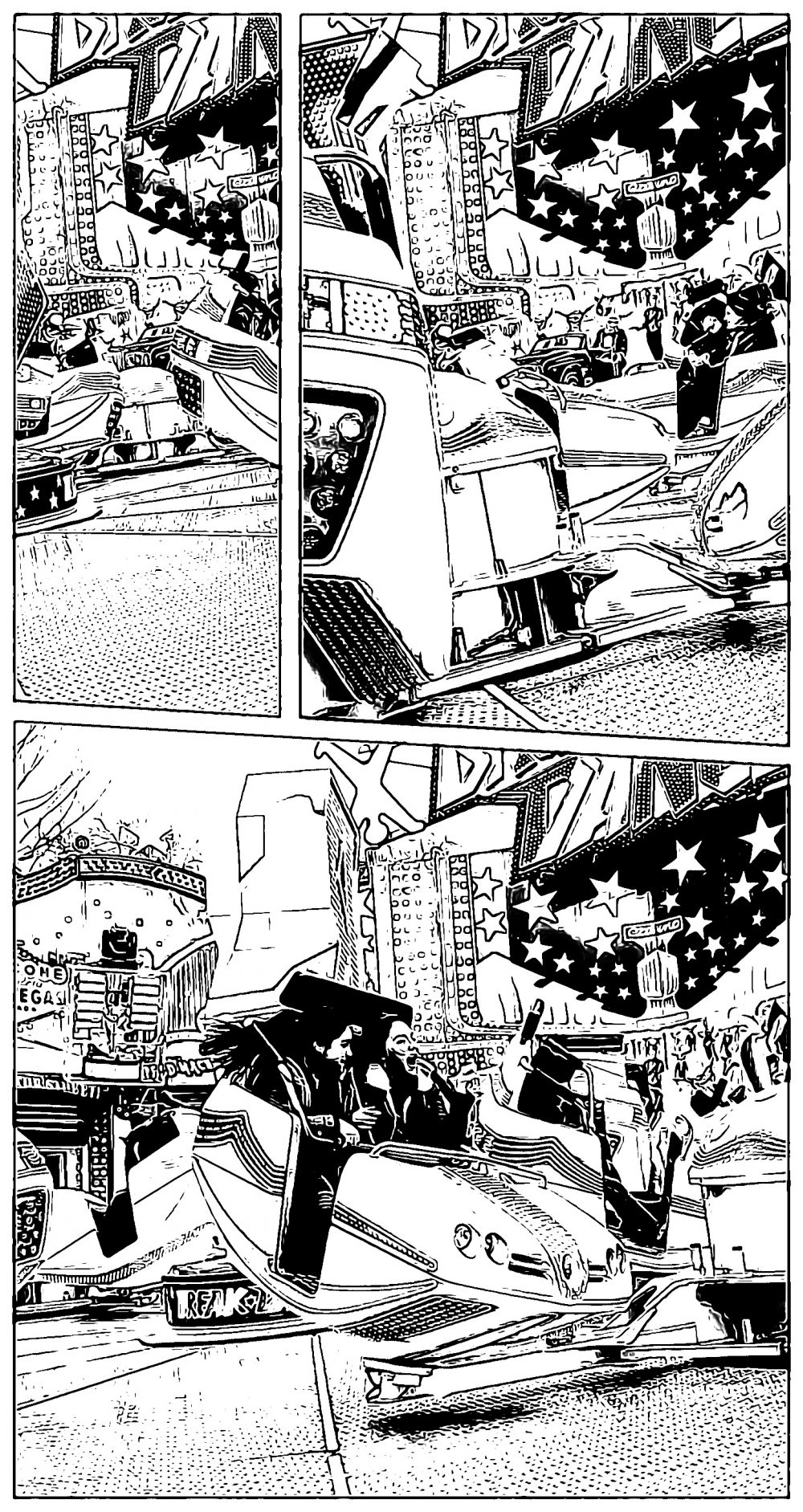
to retire is to | expire
… sprach der papa zum kleinen donald. außerdem gab er ihm den vierstufigen erfolgstipp überhaupt mit auf den weg:
- get in
- get it done
- get it done right
- get out.
nachzulesen in der Financial Times vom 11. oktober 2008.
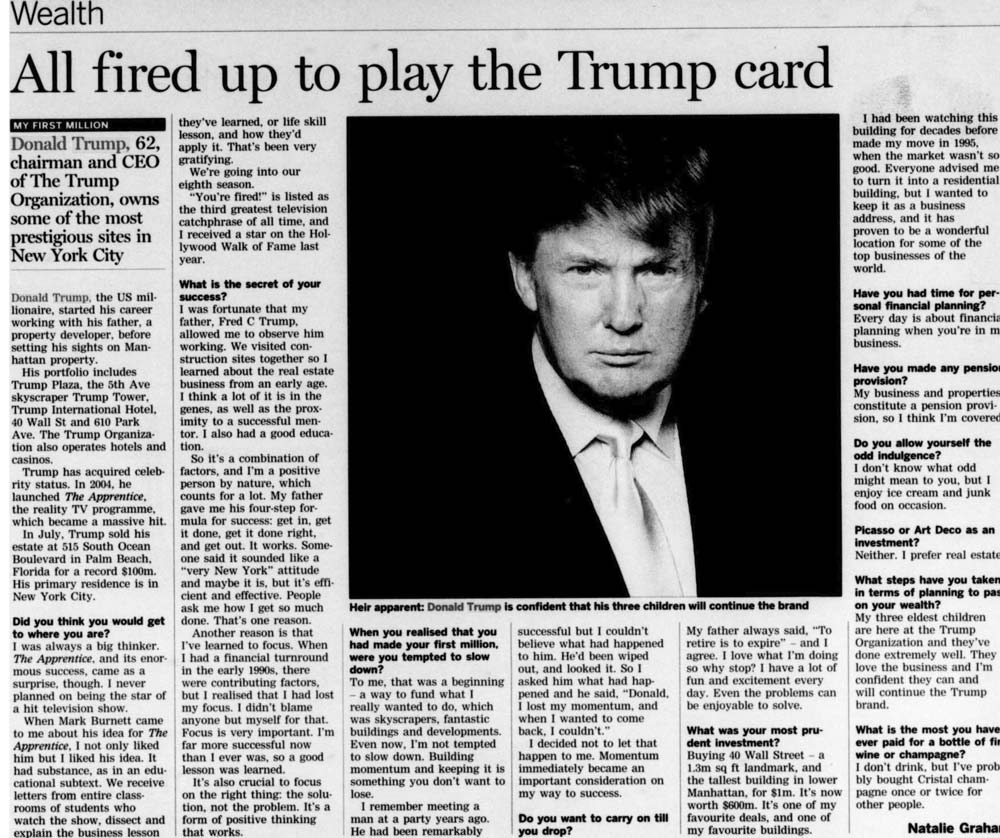
Financial Times, 11 Oct. 2008. unten: detail daraus
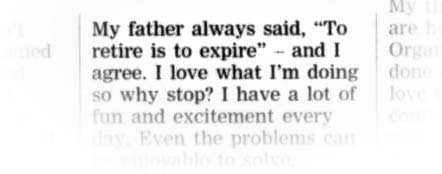
night (render) | shift
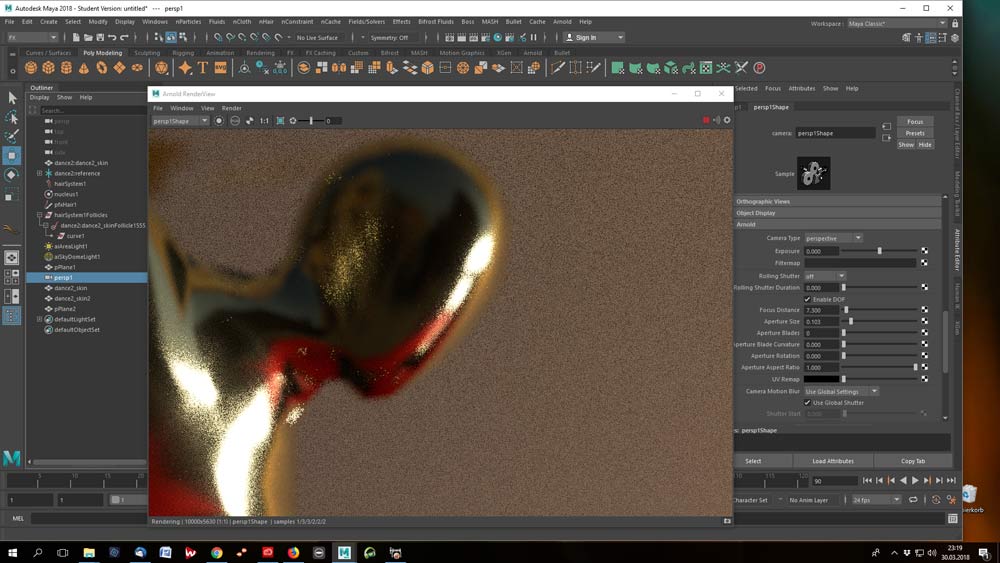
this image will render over night.
rotes perlen | schiff
dieses bild ist durch organisierten zufall entstanden. eigentlich basiert es auf einem tutorial, das ich über so genannte partikel-kollisions-ereignisse gemacht hatte. damit ist gemeint, dass ein partikel in der 3D-physik-simulation beim zusammenstoß mit anderen partikeln oder oberflächen bestimmte dinge tut, typischerweise erlischt und neue partikel an dieser stelle produziert. das tutorial ist → hier zu sehen.
ich kann von der szene eine animation, also einen film berechnen lassen, oder, wie hier ein einzelbild. dieses ist im original 5000 pixel breit. deswegen zeige ich unten einen ausschnitt in originalgröße. außer den partikeln und einer lichtquelle sind hier zwei kameraeffekte zugange: bewegungsunschärfe und tiefen(un)schärfe.
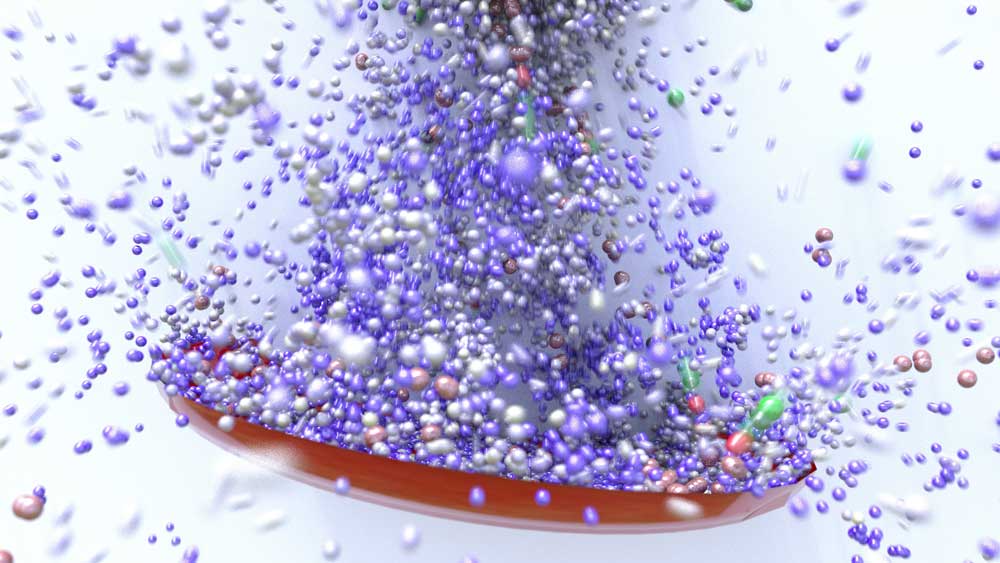
rotes perlenschiff. grafik: ms
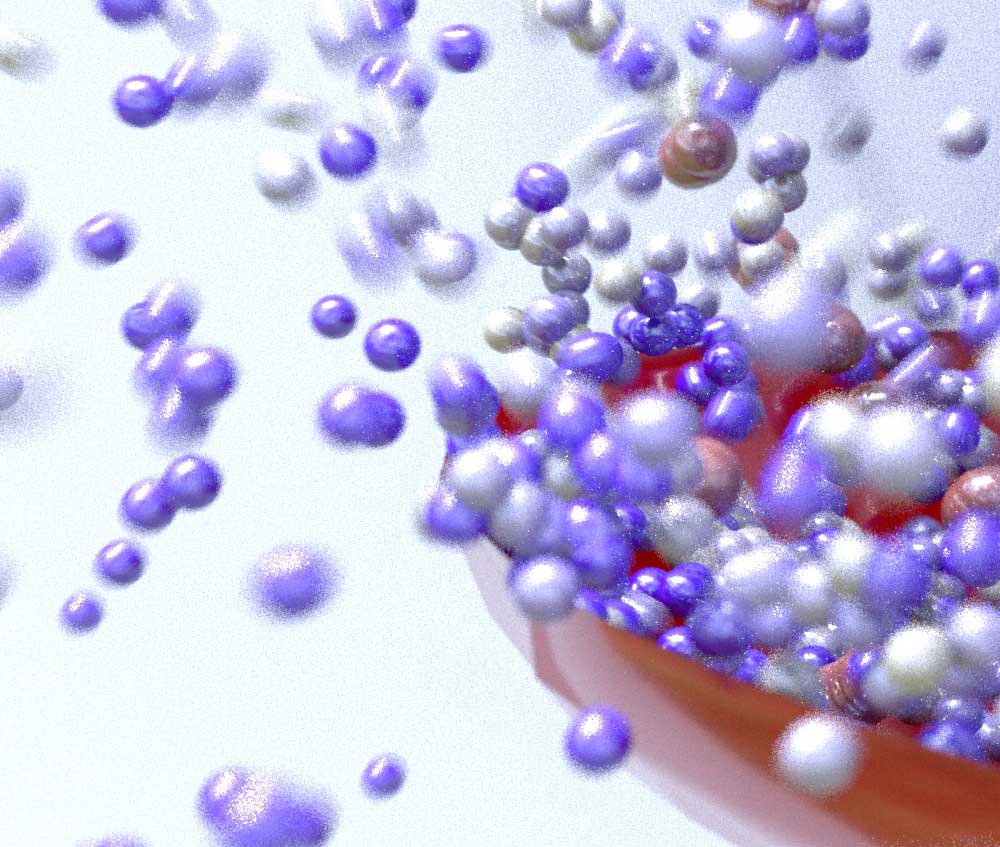
detail von oben, originalgröße
die 3D-szene im so genannten viewport, in dem man arbeitet, um sie zu erstellen, sieht so aus:
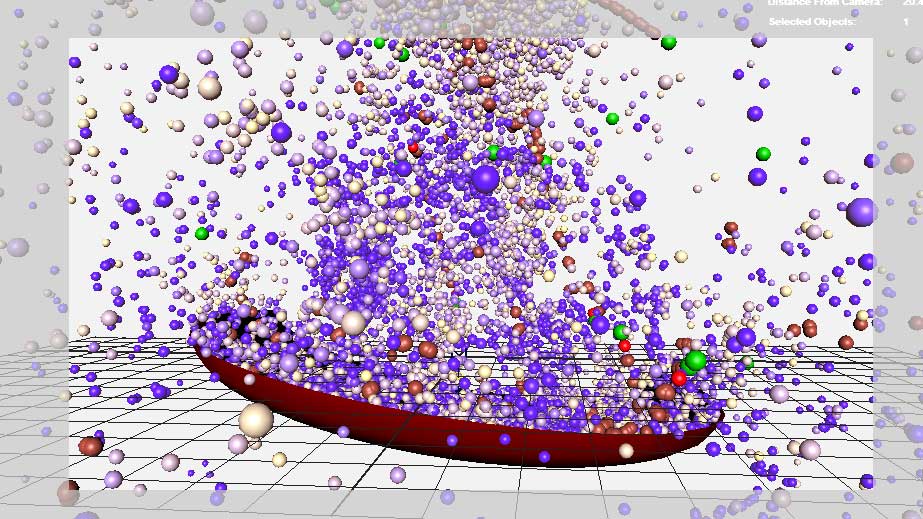
viewport-ansicht
die software hat so viel zu rechnen, dass man erst später sieht, wie schnell oder langsam sich alles entwickelt. viel zu schnell im ersten test.